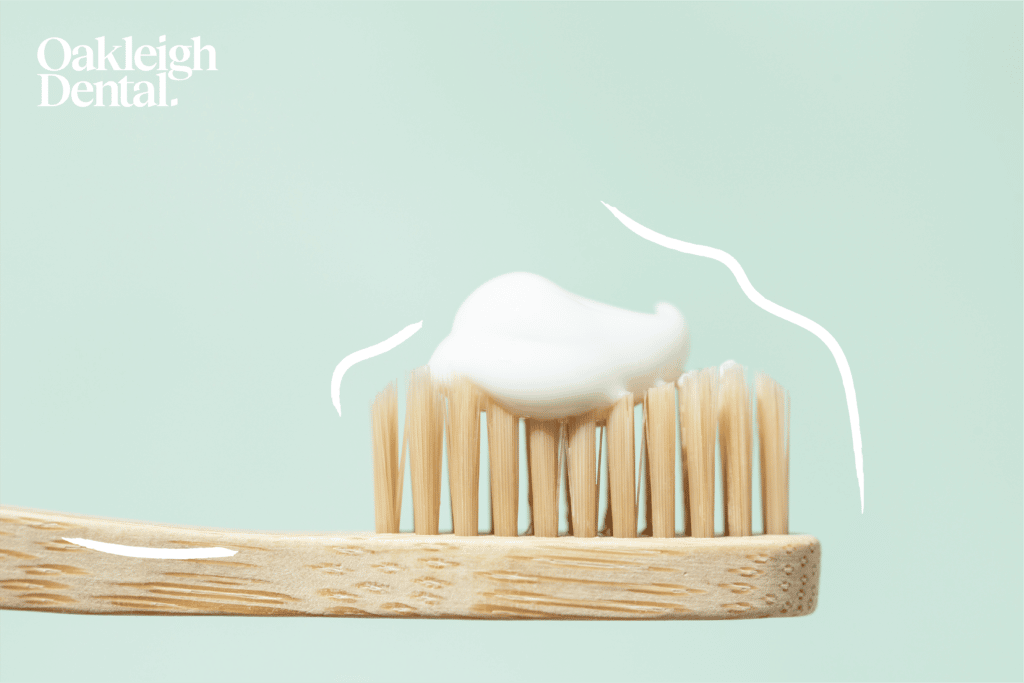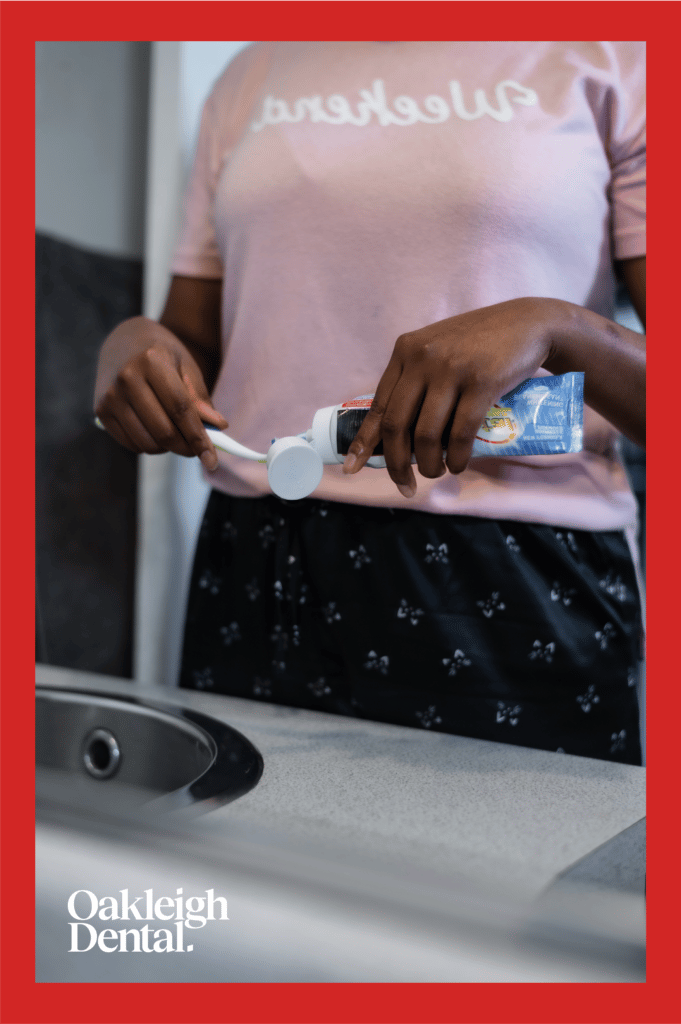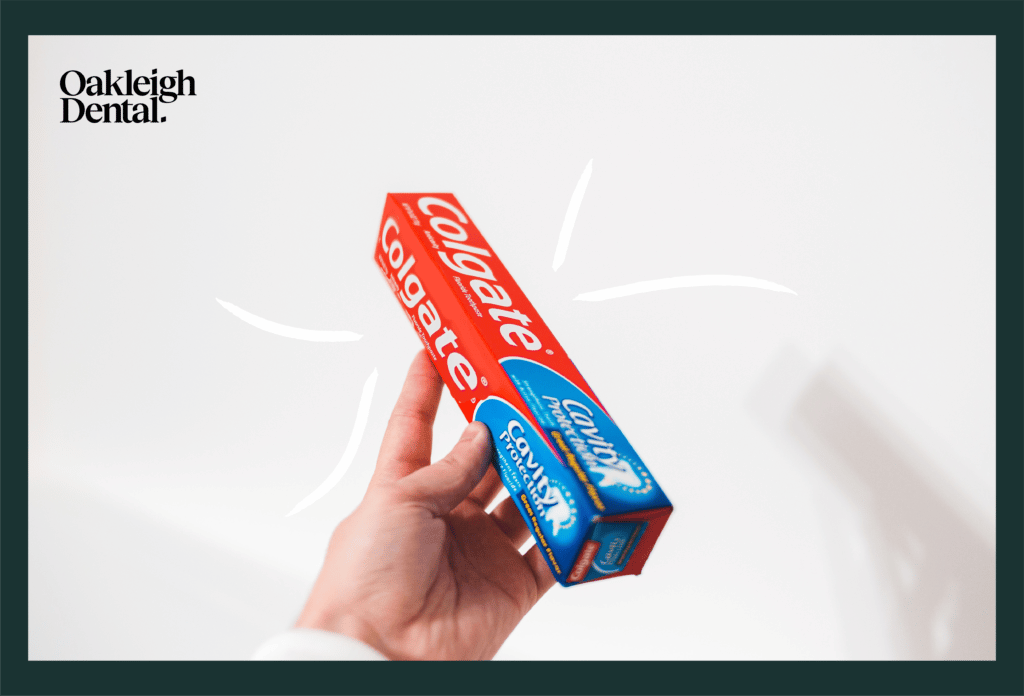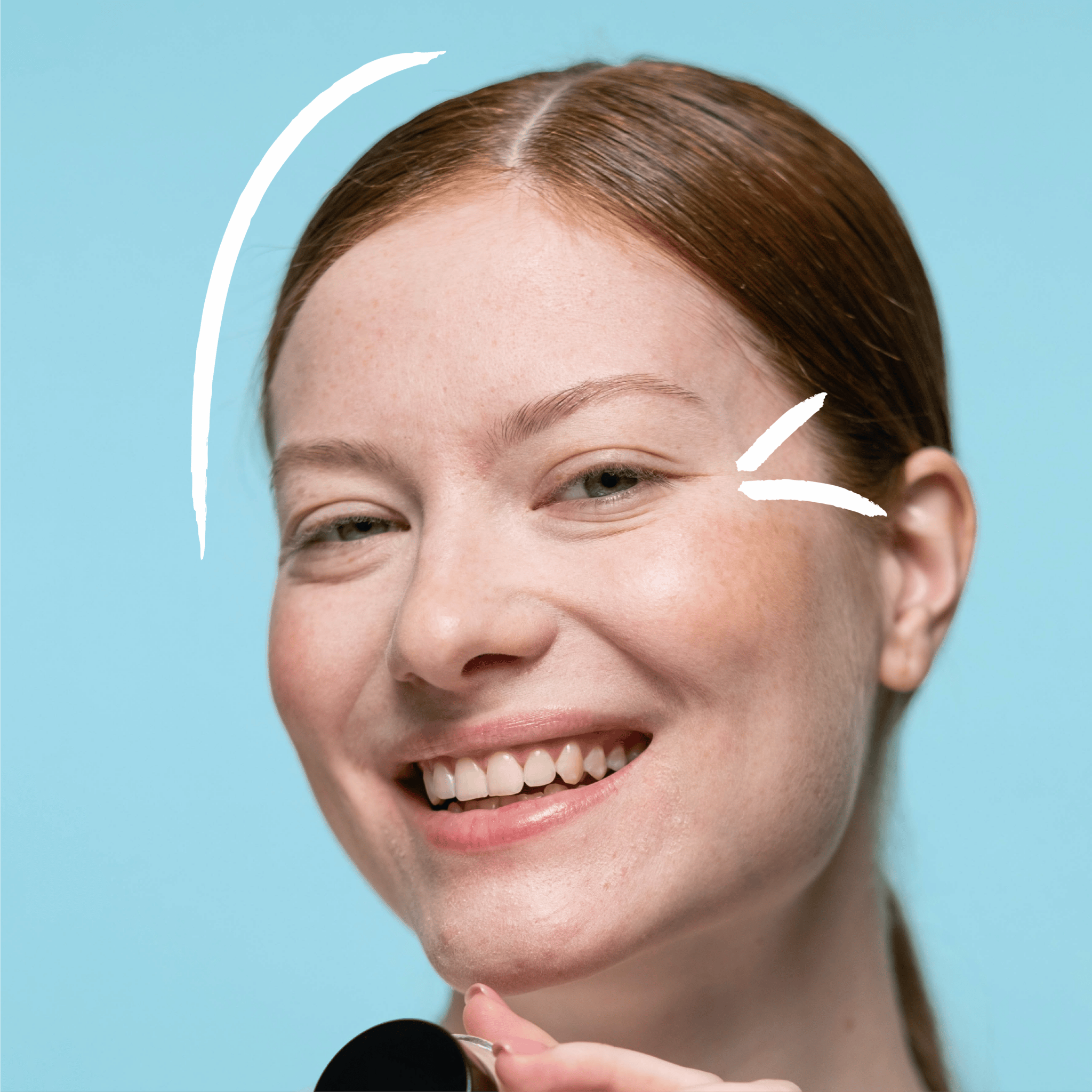Most people know what toothpaste is — that minty, sticky gel you put on your toothbrush to clean your teeth. But most people don’t really know the facts around toothpaste, what they should be using, and how they should be using it. This article serves to answer all your questions, even the ones you didn’t know you had!
Do you need toothpaste to clean your teeth?
This might come as a shock to most people, but technically no! The main goal of brushing is to remove plaque, the colourless bacteria film that forms on your teeth after you eat. While we think about the process of cleaning our teeth as brush + paste, the truth is that your brush alone is good enough to remove plaque as long as you are brushing regularly and with good technique. Check out our article on keeping your teeth clean to find out how to brush properly.
Other oral health practices like flossing, regular dental checkups and cleans, and limiting sugary foods will all help to remove or reduce plaque on your teeth. But if toothpaste isn’t necessarily removing plaque, what does it actually do, and why should we use it?

What does toothpaste do?
Toothpaste doesn’t remove plaque, but there are still a number of benefits to using when you brush your teeth:
- Fluoride: The vast majority of toothpastes contain fluoride, a natural mineral that plays an important role in the strength of your enamel. Fluoride helps your teeth to harden and become more resistant to the acid produced by bacteria in the mouth. For children, fluoride can help improve teeth resistance to cavities while developing and emerging.
- Bad Breath: Toothpastes are made to taste and smell nice, which helps to freshen your breath when brushed onto your teeth. There are a number of different scents and flavours available in toothpastes nowadays. However, the classic ‘minty fresh’ is a tried and true winner known to make your mouth smell nice.
- Abrasives: While toothpaste does not inherently remove plaque, the abrasives that toothpaste contains can help bristles grip the plaque and remove it. Additionally, abrasives also have a polishing effect, removing stains from teeth. However, abrasives need to be used sparingly — they can actually damage your enamel when overused! Every toothpaste has a Relative Dentin Abrasivity (RDA) score that helps consumers know if it is safe to use. You should avoid using any toothpaste with an RDA above 250.
How to use toothpaste
It might seem like the more toothpaste you use the more effective it will be. This line of thinking is not only false — it can be detrimental. Knowing how much to use is an important part of cleaning; while abrasive ingredients and fluoride are really effective in small measures, they can strip away your enamel and lead to discoloration if overused.

Many people may not be paying attention to how much toothpaste they squeeze onto their toothbrush. We are influenced heavily by advertising, which shows images of long ribbons that cover the entire head of a brush, but the actual amount needed to be effective is much smaller than this.
When brushing with toothpaste, adults only need a small pea-sized dab of standard toothpaste. Children only need a tiny smear of toothpaste from when their first tooth erupts until the age of 3, before moving on to the regular pea-sized amount. However, children should use a low-fluoride toothpaste to protect them from accidentally swallowing too much fluoride and developing fluorosis.
Types of toothpaste
There are a variety of specific toothpaste types, each targeting a different area of oral health. When considering what type of toothpaste to use, It is always a good idea to chat to your dentist about your specific dental needs, and the best toothpaste to use.
- Whitening: While not as powerful as tooth whitening treatments, these toothpastes can help to remove stains with the help of special abrasives. However, if you are using a whitening toothpaste hoping to counteract frequent coffee or red wine drinking, it is unlikely to be effective — they are unable to change the natural colour of your teeth or affect stains that go deeper than the surface.
- Sensitivity: Many people suffer from sensitivity to hot and cold on their teeth, but sensitivity toothpaste works to block the microscopic holes in the tooth that lead to nerve endings. The relief is often not immediate and needs up to four weeks to begin working effectively.
- Tartar Control: Tartar is plaque that has hardened on the teeth without being removed. While the only way to truly remove tartar is a dental clean, tartar control toothpastes can help by delaying the calcification (hardening) of plaque. This allows you more time to remove plaque with normal methods.

No replacement for a visit
Using toothpaste to clean your teeth can help you to remove stains, relieve pain and freshen breath, but even the most thorough home cleaning will not completely remove all issues. It’s important to include regular dental visits and cleans as part of your oral health. Get in touch today to book an appointment or chat through your options — we’re here to help you smile.


